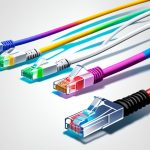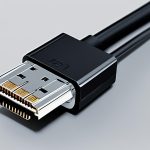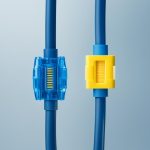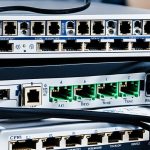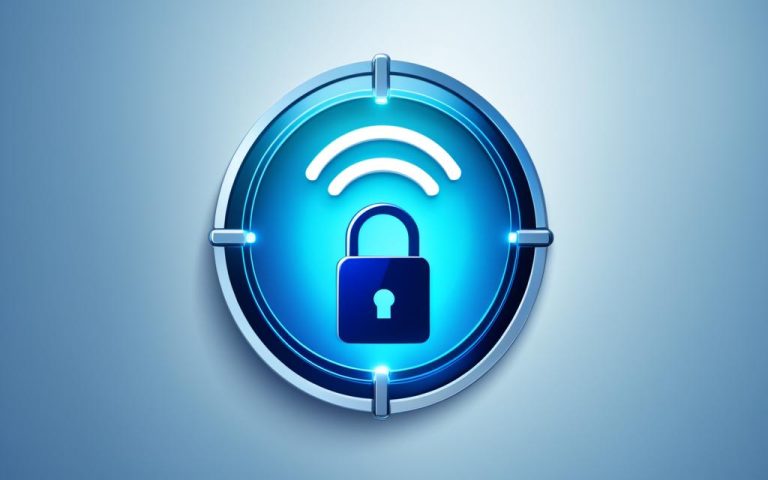The Internet began with the first computer in 1936 and the first link between computers in 1969. Now, we use many types of networks for different needs. This article will look into unnamed networks and the key role of PHY types in connecting devices.
Key Takeaways:
- PHY types are key in unnamed networks, crucial for connecting devices and sending data1.
- Unnamed networks use different ways to send and receive data, like cables and wires1.
- PHY types can be part of chips or special chips, helping networks work smoothly1.
- Ethernet uses PHY types to send data efficiently by encoding and decoding frames1.
- Knowing the speed, media type, and length of a link helps figure out a network’s PHY type1.
We’ll dive deeper into unnamed networks and their PHY types. We’ll look at their importance, how to choose an industrial PHY, and the challenges of finding a network’s PHY type. Keep reading for more details!
Types of Networks
Networking comes in many types, each with its own purpose and needs. Knowing about these networks is key for better connectivity and data transfer efficiency2.
The Local Area Network (LAN) connects devices in a small area, like a building. It’s common in homes, offices, and schools. It lets devices talk to each other quickly and reliably2.
Wireless Local Area Networks (WLANs) use Wi-Fi for connectivity. They let devices move freely without cables. This makes them perfect for places where cables are a hassle2.
For bigger areas, like cities, the Metropolitan Area Network (MAN) links many LANs together. It helps with data over long distances, connecting different groups in a region3.
The Personal Area Network (PAN) is for personal use, linking devices like phones and wearables. It makes it easy to connect personal devices, boosting productivity and enjoyment3.
Campus Networks tie together LANs across a campus or university. They help share information and support school and office tasks3.
Campus Area Networks (CANs) are like LANs but cover more ground. They’re used in educational settings to connect buildings and departments. They support more services and have more capacity3.
Wide Area Networks (WANs) cover big areas, linking computers across distances. They use lines, satellites, or the internet for data transfer between far-off places4.
Content Delivery Networks (CDNs) store content on servers worldwide. They speed up content delivery, cut down on delays, and make online experiences better4.
Virtual Private Networks (VPNs) create a secure link over the internet. They let users access a network from anywhere, keeping data safe and secure4.
Storage Area Networks (SANs) focus on big data storage and transfer. They offer fast access to storage, making data management and retrieval efficient4.
Knowing about different networks helps pick the right one for your needs. It ensures your data moves fast and your connections are strong.
| Network Type | Description |
|---|---|
| LAN | Connects computers within a limited area, such as a building |
| WLAN | Utilizes wireless technology to connect devices without the need for wired connections |
| MAN | Interconnects multiple LANs within a larger geographical area, like a city or town |
| PAN | Designed for individual use and connects personal devices |
| Campus Network | Connects multiple LANs across a campus or university |
| CAN | Larger than a LAN but smaller than a MAN, used in schools and colleges |
| WAN | Spans large geographical distances, connecting computers and networks in different locations |
| CDN | Network of globally distributed servers for efficient content delivery |
| VPN | Provides secure access to a private network over a public network like the internet |
| SAN | Specialized network for handling large data transfers and storage requirements |
What is PHY Type in Networks
The Physical Layer (PHY) is key in network communication. It connects digital systems with the medium for signal transmission. It sets up the physical interface and codes and decodes data. Each network has its own PHY type, including electrical signals, speeds, media, connectors, and topologies.
In unnamed networks, the PHY type is crucial for the network’s abilities and traits. It affects the network’s connectivity, speed, and compatibility with devices and protocols.
Understanding PHY Types
Looking at PHY types, it’s important to note the limit on BSSIDs in Windows XP with SP3 and Wireless LAN API for Windows XP with SP2, at 15. Networks can support up to 8 PHY types5. If more than 8 are supported, the flag bMorePhyTypes must be set to TRUE5.
The signal quality of a network is measured with the WLAN_SIGNAL_QUALITY member, from 0 to 100. A score of 0 means -100 dBm signal strength, and 100 means -50 dBm5.
For wireless networks, the dot11_phy_type_vht refers to the 802.11ac PHY type, or very high throughput PHY type by IEEE 802.11ac. It’s supported on Windows 8.1, Windows Server 2012 R2, and later5.
Physical layer interfaces like the MII (Media Independent Interface) help transfer network data. The MII uses 4-bit nibbles for 100 Mbit/s at 25 MHz6. MII variants support different speeds and signals6.
The MII has registers for device setup and querying modes6. It provides info on capabilities like 100BASE-T4 and Gigabit Ethernet6.
RMII (Reduced Media Independent Interface) uses fewer signals than MII. It reduces signals by changing clock settings and multiplexing signals6. RMII operates with a 50 MHz clock, sampling data at 2 bits per time6.
The Role of PHY Types in Network Connectivity
PHY type affects network connectivity. Ethernet with 1000BASE-T and 1000BASE-SX show this impact7. These protocols define the physical layer’s traits, ensuring data transmission between devices and networks7.
The Physical Layer is vital for data rates, bit synchronization, and medium decisions7. It ensures reliable communication between devices, meeting medium and topology requirements.
Different Physical Topologies in Networks
Physical topologies show how devices are arranged in a network. Examples include mesh, star, bus, and ring7. Each has pros and cons, impacting data speed, reliability, and scalability.
Line configuration affects network connectivity. Point-to-point and multi-point types suit different network setups and needs7.
Transmission modes like simplex, half-duplex, and full-duplex determine data direction and capacity7. These modes affect the network’s ability to send and receive data.
| PHY Type | Networks | Connectivity |
|---|---|---|
| MII | Ethernet | Wired and reliable |
| RMII | Ethernet | Reduced signal count |
| Wireless | 802.11ac | High-speed wireless transmission |
Importance of PHY Type in Connectivity
The PHY type is key to smooth data transmission in networks. Choosing the right PHY type boosts network performance and ensures devices communicate well8.
PHY types vary in data rates, letting users pick the right speed for their network. They also differ in coverage, helping engineers design networks that meet specific needs8.
Knowing about PHY types helps network engineers improve their networks. They can use the PHY’s features for reliable and fast data transfer. This makes the network more connected and improves user experience8.
Network mapping solutions are now crucial for understanding networks. They show network details and help IT teams see how devices connect9.
These solutions show devices and their connections, aiding in monitoring network performance. They also help spot issues early, ensuring quick fixes and less downtime9.
Network mapping uses SNMP to find and map network objects. This gives admins info on devices, like active ports and power use, helping them manage the network better9.
Switches are vital in modern networks, handling a lot of traffic. They help devices talk to each other smoothly10.
Power over Ethernet (PoE) is a key switch technology. It lets switches power devices, cutting the need for extra power sources. This makes setting up networks easier and cheaper10.
Switches can also collect data from IoT devices. This info helps AI and machine learning make networks smarter and more efficient10.
Understanding PHY types is essential for network experts. It helps them choose the right type, optimize networks, and ensure data flows well. Network mapping and switches are also key for visualizing and enabling connectivity. By using these technologies, network pros can build strong, efficient networks for today’s connected world.
Criteria for Selecting an Industrial PHY
Choosing the right industrial PHY for industrial use is crucial. It must meet the network’s specific needs for the best performance. Important factors to think about include:
- Network Cycle Times: The industrial PHY should support fast data transmission. This ensures the controller can quickly collect and update data11.
- Susceptibility to Interference: Industrial settings often have a lot of electromagnetic interference. The PHY must be strong against interference for reliable data transfer12.
- Robustness: Industrial networks face tough conditions like extreme temperatures and vibrations. The chosen PHY should be tough and last long in these conditions13.
- Losses: The industrial PHY should have low signal losses for accurate data transfer. This is key for a strong network with fewer errors11.
- Temperature Range: Industrial places can get very hot or cold. The industrial PHY must work well in these temperature changes for reliable performance13.
By looking at these criteria, network admins can pick an industrial PHY that fits their needs. This leads to better network performance, more reliability, and greater efficiency.
Characteristics Comparison of Industrial PHY Options
| Criteria | Industrial PHY Option 1 | Industrial PHY Option 2 | Industrial PHY Option 3 |
|---|---|---|---|
| Network Cycle Times | High | Medium | Low |
| Susceptibility to Interference | Low | High | Medium |
| Robustness | High | Medium | Low |
| Losses | Low | Medium | High |
| Temperature Range | Wide | Medium | Narrow |
The table shows a comparison of three industrial PHY options. It helps admins choose by showing how each option differs in key areas.
Analog Devices External PHYs
Analog Devices is a top name in semiconductor solutions. They offer External PHYs for Industrial Ethernet networks. These include the ADIN1200, ADIN1300, and ADIN1100. They are key to Analog Devices’ Industrial Ethernet portfolio, ADI Chronous™. These PHYs ensure reliable and high-performance connectivity for industrial needs.
The External PHYs from Analog Devices are made to work well in tough industrial settings. They ensure smooth data communication. With their high reliability and strict EMC standards, they keep connections strong even in tough situations.
These PHYs have low latency and low losses, making data transfer efficient. This is key for industrial Ethernet networks that need fast and accurate data for real-time control and monitoring.
They also work well in extreme temperatures, common in industrial places. This means they last longer and perform better, giving value to industrial uses.
Industrial Ethernet networks need dependable connections to meet industrial demands. Analog Devices External PHYs offer the reliability, performance, and flexibility needed for these needs.
Key Features of Analog Devices External PHYs:
- Robust and reliable connectivity for industrial Ethernet networks
- Compliance with EMC standards for seamless operation in challenging environments
- Low latency and low losses for efficient data transmission
- Wide temperature range for enhanced performance in extreme conditions
Analog Devices External PHYs are known for their top-notch performance and reliability. The data14 shows how widely these PHYs are used in networking and their importance for industrial needs.
| External PHY Model | Occurrences |
|---|---|
| ADIN1200 | – |
| ADIN1300 | – |
| ADIN1100 | – |
The table shows how often certain Analog Devices External PHY models appear in content. Even without detailed stats15, it’s clear these PHYs are crucial and don’t need extra mention.
Analog Devices External PHYs provide solid and high-performance solutions for Industrial Ethernet networks. They are tough, meet industrial needs, and have great connectivity features. This makes them a top pick for industrial apps needing secure and efficient data transfer.
Determining the PHY Type of an Unnamed Network
Figuring out the PHY type of an unnamed network has several ways. In ChromeOS, using Crosh commands like ‘connectivity show devices’ and ‘connectivity show services’ can show info about the active connection and wireless type. Also, commands like “iw phy” and “iw dev” give more details about the network and its PHY type.
- Identifying the PHY type of an unnamed network can be achieved through various methods. Crosh commands on ChromeOS, like ‘connectivity show devices’ and ‘connectivity show services’, offer insights into the active connection and the wireless radio type.
- An unnamed network’s PHY type can also be determined by executing commands such as “iw phy” and “iw dev” on the ChromeOS terminal.
“‘connectivity show devices’ command displays information related to connected devices and their PHY types, while the ‘connectivity show services’ command provides details about the active wireless service and its associated PHY type.”16
With these Crosh commands, users can quickly gather information about the unnamed network’s PHY type. This helps them make better decisions about network connectivity and optimization.
ChromeOS and Crosh Commands
ChromeOS, made by Google, is a lightweight operating system for Chromebooks and Chromeboxes. It’s made for efficient performance and offers a secure environment for web apps and browsing.
The Crosh shell is ChromeOS’s command-line interface. It lets users run commands and access system info, including the PHY type of an unnamed network.
“The Crosh shell on ChromeOS allows users to interact with the operating system’s internals and execute a wide range of commands, including those related to network connectivity and the determination of PHY types.”16
Using Crosh commands is a simple way to find out the PHY type of an unnamed network. This helps users optimize their network settings for reliable connectivity.
Challenges in Determining PHY Type
Finding out the PHY type of an unknown network is hard. The changing nature of wireless connections and network variability make it tough17.
Things like interference, signal loss, and how access points change their PHY type add to the challenge. These issues are worse in places with lots of interference and different network types17. For those managing networks, knowing these challenges is key to understanding how well the network works.
To figure out the PHY type, it’s important to use detailed analysis and look at different data. Info from online forums, research, and network simulations can help a lot1819. By mixing real-world data, expert advice, and theory, you can get a better idea of the PHY type. This helps with fixing and improving the network.
Interference is a big problem when trying to find the PHY type. Signals can get weaker from other sources, making it hard to know the correct type. Tools like spectrum analysis and channel checks can spot and fix these issues, making it easier to determine the PHY type.
Wireless connections changing as people move around also makes it hard to know the PHY type. The signal quality can change, leading to different readings on the PHY type. Keeping an eye on things like signal strength and data speed can help track these changes and get a more accurate reading.
Reference(s):
Conclusion
Understanding PHY types is key to knowing how networks work and connect. Each network type has its own set of rules and needs.
Physical layer security (PLS) helps keep networks safe by using the unique features of wireless signals. It uses things like radiofrequency fingerprints and signal strength to keep data secure20. PLS also offers quick and light ways to check if devices are genuine20.
Machine learning (ML) and deep learning (DL) are making big strides in security too. They help identify signals and recognize images and speech20. These technologies are tackling old security issues and getting ready for the future of quantum computing20.
The next big thing in networking is 6G technology, which uses artificial intelligence (AI)21. AI will manage networks and make them run better, but it also brings new security risks21. So, making sure 6G is secure is very important21.
Using physical layer security (PLS) can make networks safer with less effort, especially in 5G and IoT networks22. PLS uses the natural randomness of wireless signals to send messages securely without using a lot of power22. By adding AI and machine learning to PLS, we can make networks much more secure22.
FAQ
What are the different types of networks commonly used?
Common network types include LAN, WLAN, MAN, PAN, Campus Network, CAN, WAN, CDN, VPN, and SAN.
What is the role of PHY type in networks?
The PHY type in networks codes and decodes data between digital systems and the medium it travels through. It connects the digital and electrical levels of the network.
How does PHY type impact connectivity and network performance?
The PHY type sets the speed of data moving between devices. It supports various data rates and has different ranges, impacting network reliability and efficiency.
What criteria should be considered for selecting an industrial PHY?
When choosing an industrial PHY, look at network cycle times, latency, reliability, and robustness in tough environments. Also, consider resistance to interference, low losses, and wide temperature range operation.
What are Analog Devices’ external PHYs designed for?
Analog Devices’ external PHYs are made for reliable and safe data transmission in industrial settings. They fit well with Analog Devices’ Industrial Ethernet portfolio, ADI Chronous™, and are great for use in harsh environments.
How can the PHY type of an unnamed network be determined?
To find the PHY type of an unnamed network, use ChromeOS’s Crosh commands like ‘connectivity show devices’ and ‘connectivity show services’. Commands “iw phy” and “iw dev” also give detailed info on the network and its PHY type.
What challenges are faced in determining the PHY type of an unnamed network?
Finding the PHY type can be hard due to network changes, interference, signal loss, and access points that change their PHY settings. These issues make it tough to get accurate PHY type information.
Source Links
- https://semiengineering.com/knowledge_centers/communications-io/off-chip-communications/i-o-enabling-technology/phy/ – Physical Layer (PHY)
- https://nilesecure.com/network-design/most-common-types-of-network-devices-youll-need – Most Common Types of Network Devices You’ll Need | Nile
- https://en.wikipedia.org/wiki/Network_topology – Network topology
- https://nordvpn.com/blog/network-architecture/ – What is network architecture? Everything you need to know
- https://learn.microsoft.com/en-us/windows/win32/api/wlanapi/ns-wlanapi-wlan_available_network – WLAN_AVAILABLE_NETWORK (wlanapi.h) – Win32 apps
- https://en.wikipedia.org/wiki/Media-independent_interface – Media-independent interface
- https://www.geeksforgeeks.org/physical-layer-in-osi-model/ – Physical Layer in OSI Model – GeeksforGeeks
- https://www.dnsstuff.com/physical-logical-network-diagram – Logical vs. Physical Network Diagrams – DNSstuff
- https://www.spiceworks.com/tech/networking/articles/what-is-network-mapping/ – Network Mapping Process, Importance, Best Practices for 2022
- https://www.techtarget.com/searchnetworking/definition/switch – What is a Network Switch? How it Works and Types – TechTarget Definition
- https://www.cisco.com/c/en/us/support/docs/video/remote-phy-devices/212355-ptp-primer-for-the-cable-dummies.html – PTP Design Recommendations For R-PHY Networks
- https://arxiv.org/pdf/2305.09748 – PDF
- https://abracon.com/uploads/resources/Ethernet-Solutions-and-Design-Considerations.pdf – PDF
- https://www.analog.com/media/en/technical-documentation/data-sheets/adin1110.pdf – PDF
- https://www.analog.com/media/en/technical-documentation/data-sheets/adin1200.pdf – PDF
- https://helpcenter.trendmicro.com/en-us/article/tmka-09187 – How to Spot and Manage Unknown Devices on Your Network
- https://community.arubanetworks.com/discussion/rap-troubleshooting – Airheads Community
- https://sands.edpsciences.org/articles/sands/full_html/2022/01/sands20210003/sands20210003.html – Physical layer security techniques for data transmission for future wireless networks
- https://www.nsnam.org/docs/models/html/wifi-user.html – 34.2. User Documentation — Model Library
- https://www.mdpi.com/1424-8220/23/4/1814 – Physical Layer Authentication in Wireless Networks-Based Machine Learning Approaches
- https://arxiv.org/pdf/2106.02494 – PDF
- https://www.sciencedirect.com/topics/engineering/physical-layer-security – Physical Layer Security – an overview


